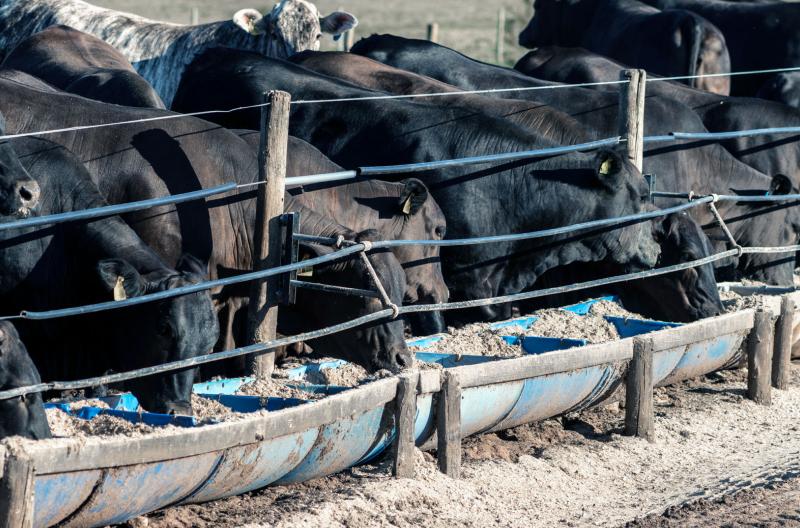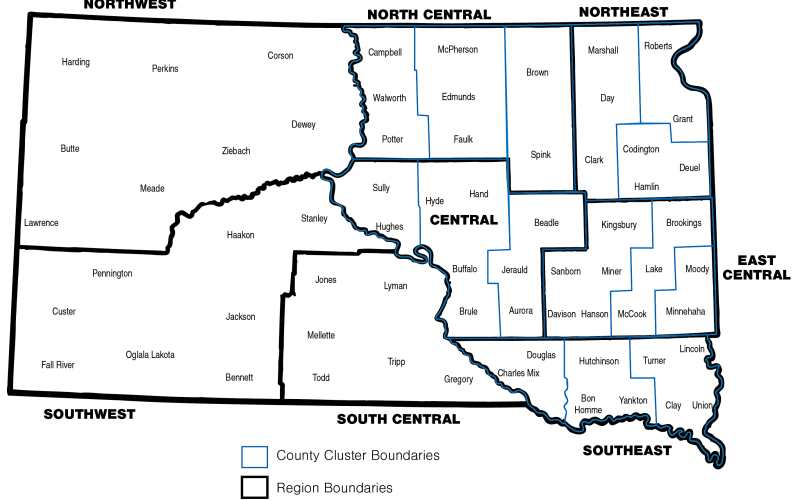Originally written by Adele Harty, former SDSU Extension Cow/Calf Field Specialist.
Each year, cow-calf producers have a percentage of cows that are culled from the herd for various reasons. They may have been open at pregnancy check time, lost a calf, have reached a normal culling age, or faced drought conditions that forced an earlier or increased culling rate. No matter the reason for culling, it is important to evaluate the opportunity to add value to these females at marketing, as they can equate to 15-30% of the annual ranch income.
Considering the normal price cycle for cull cows, the seasonal low typically occurs in November as a result of increased numbers of spring-calving cows flooding the market following weaning and pregnancy check. The seasonal high typically occurs in July, but increases are also seen in early spring (April-May), providing the opportunity to market the cows during a different time point and capture additional value by feeding these cows for a period of 30 to 90 days after weaning.
Costs and Benefits of Feeding

There are both costs and benefits associated with feeding cows, and it is important to evaluate your individual situation to determine whether it is feasible for your operation. Some of the questions to consideration are: Do I have the pen or pasture space to manage these cows? What feed resources can I allocate to this group? Will feeding equipment be available? Do I have the time and labor resources to feed this group of cattle? Those are just a few things to think about. The potential benefits of feeding cows include three main factors: additional weight gain, which can translate into more pounds to sell; improved body condition score (BCS) and slaughter grade, which would add value; and seasonal price increase coupled with the other two factors, which could further increase value.
Additional weight gain will vary based on multiple factors, specifically what condition the cows are in at the beginning of the feeding phase. Take time to evaluate each animal and determine whether they are healthy, with sound feet and legs, and in good condition. If they are not healthy, it is better to sell her rather than risk her dying during the feeding phase. Only healthy cows should be fed. Cows in a BCS of <6 will gain more weight faster than their more-heavily conditioned counterparts at BCS 7 or 8. The type of diet these cows are fed will also play a role in how fast they gain condition and will influence cost.
Marketing Considerations
There is a relationship between BCS and slaughter grade, which means that as BCS increases, the slaughter grade of the cattle will improve. For example, a cow in BCS 4 is considered “lean” and would be a U.S. Department of Agriculture (USDA) grade “cutter.” If that BCS 4 cow can be fed to reach a BCS 6, she would move into the “boner” category, which would equate to a USDA grade “utility.” The expected price increase for this improvement in grade is $1.50 per hundredweight (CWT).
Finally, seasonal price increase on average is $5 per cwt from November to February, but this is not a constant. Depending on the level of cow slaughter, this number can change, so having an understanding of the current cull cow slaughter situation is important.
Feed costs are going to be the largest expense to keeping and managing these cows to a heavier weight, which means that cows that will be less-efficient, such as the heavier conditioned cows, may not be able to put on enough weight and condition to make feeding them a profitable venture. Research indicates that BCS at the beginning of the feeding period is a strong indicator of net returns. Cows that were in a BCS of 6 or greater at the start of the feeding period had zero or negative net return relative to revenue at culling, while cows that were in a lower BCS at the beginning of the feeding phase yielded a positive net return above revenue at culling when fed on a native pasture, but a negative net return when fed in a dry lot situation (Encinias and Lardy, 2000).
The Bottom Line
Evaluate your costs and projected returns to determine if feeding cull cows would be an option for your operation. This Cull Cow Marketing Calculator from University of Wyoming can help determine whether this would be an economically viable option for your operation. Select the cows that have the greatest opportunity to gain weight quickly and efficiently to increase slaughter grade and hit some of the seasonal price increases.


